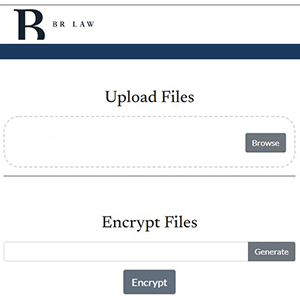
Lessons from a Firm’s Digital Transformation Journey
BR Law Corporation is a full-service Singapore law firm in good standing for over 35 years. Over the past three decades, the firm has seen the technology landscape evolve. The firm was therefore sensitive to the transformative impact of technology, although it did not at the time have a structured roadmap for digital transformation.
 The Road to Digital Transformation
The Road to Digital Transformation
In 2017, the firm undertook a major rebranding exercise that, among other things, saw it revamp its website infrastructure. This kicked off five years of steady and incremental IT upgrades, including migrating from an on-premise legacy legal practice management system (LPM) to a cloud-based LPM, adopting cloud office suites and document storage, implementing video conferencing tools, hiring a dedicated IT team, and deploying internal communications tools.
COVID-19 as a Catalyst
Our firm deployed our cloud-based LPM and cloud document storage solutions in February 2020, mere weeks before COVID-19’s presence in Singapore triggered a “circuit-breaker”. The disruption wrought by the circuit-breaker helped overcome any internal inertia from within the firm, and forced rapid adoption of the new LPM and cloud document storage solutions, as well as the development of new processes to adapt to distributed and remote working.
Embracing New Ways of Working
In the past 12 months, the firm has opened two new office locations and is presently setting up one more location, which will become our new main office. Some of the workflows and processes developed as a result of the circuit-breaker have continued to serve us well in our present form as a distributed workforce with lawyers and staff across multiple offices and working from home.
Some specific examples of upgrades to our IT infrastructure include:
 Building our new website on a WYSIWYG platform. This makes updating the website easy even without technical knowledge so we can manage it internally, and reduces reliance on and costs arising from third-party website developers for maintenance and updates to the site.
Building our new website on a WYSIWYG platform. This makes updating the website easy even without technical knowledge so we can manage it internally, and reduces reliance on and costs arising from third-party website developers for maintenance and updates to the site.- Our cloud LPM provides us with all the features of LPMs but made accessible remotely. We also integrated an AML (anti-money laundering) module to allow us to sync our due diligence processes to client records.
- We have implemented scanning tools to help digitize paper documentation. The scanning system includes OCR and advanced search functions to allow staff to quickly and easily locate documents by file reference number, client name, or any other text found in the body of the scanned documents.
 We deployed a telephony application that allows us to make and receive calls through the use of a mobile phone app as though we are on our firm’s phone network. In other words, if a person calls my DID, it is routed to my mobile phone app. Similarly, if I use the app to call a client, the client sees my DID as the caller’s number. We can also use the app to make internal calls by dialing the recipient’s extension number, and to transfer calls within our phone network.
We deployed a telephony application that allows us to make and receive calls through the use of a mobile phone app as though we are on our firm’s phone network. In other words, if a person calls my DID, it is routed to my mobile phone app. Similarly, if I use the app to call a client, the client sees my DID as the caller’s number. We can also use the app to make internal calls by dialing the recipient’s extension number, and to transfer calls within our phone network.- Our firm uses Office 365, a widely-used office suite well known to the legal industry. However, beyond basic word processing, some of our users have begun taking advantage of advanced features such as real time co-authoring of documents. This allows, for example, an associate to draft a document while a director simultaneously reviews and edits the very same draft. What was once a sequential process can now be done concurrently, saving substantial time.
 Our latest project is the development of an encryption system that encrypts documents for sending by email, with the ability to issue a decryption password by SMS. This ensures that sensitive documents are not read by anyone other than the intended recipient, as the likelihood is low that an encrypted document and its decryption password will be sent to the same wrong recipient by both e-mail and mobile phone.
Our latest project is the development of an encryption system that encrypts documents for sending by email, with the ability to issue a decryption password by SMS. This ensures that sensitive documents are not read by anyone other than the intended recipient, as the likelihood is low that an encrypted document and its decryption password will be sent to the same wrong recipient by both e-mail and mobile phone.
Our Experiences with Digital Transformation
We share some of our key lessons learned below:
- Resilience is as critical as productivity. We had begun our digital transformation journey searching for improvements to productivity. We learned during the circuit-breaker that our upgraded infrastructure also offered improved resilience and disaster mitigation in the event of unforeseen circumstances.
- Interaction remains important. Productivity did not decline with remote working arrangements. However, the spark of insight that gives rise to new ideas and opportunities requires the spontaneity of real-time interactions – human ingenuity cannot be scheduled. Therefore, our intended end-state is a hybrid working arrangement where lawyers and staff spend at least part of their time working in the office.
- Big changes require strong leadership. Employee buy-in and compliance is critical to adoption of new technology, and more-so when changes to IT infrastructure are involved. This requires effective communication and enforcement from the firm’s leadership.
- Good ideas can come from everywhere. While lawyers are dominant figures in the legal industry, we must be careful not to fall prey to the argumentum ad verecundium (“appeal to authority”) fallacy. On IT matters, it is helpful to seek insight from users at all levels about the challenges they face in existing workflows. The firm can then work closely with an IT team to find or create appropriate solutions. In our case, a clever and detailed insight from one of our most junior conveyancing secretaries led to the development of our encryption system.
- More customization is not always better. Out-of-the-box solutions offer limited (if any) customization. However, they can be deployed quickly and the vendor is free to focus on ironing out bugs to ensure that the solution is stable and effective for all users. Turnkey or customized solutions offer greater flexibility but may have a longer lead-time to deployment and every new customization is an opportunity for new bugs to emerge.
- The cloud is likely safer than an on-premise system. So long as a firm engages a reputable cloud service provider and observes general IT security best practices that would apply under all circumstances, there is no reason to believe the cloud is less secure than an on-premise system. In fact, quite the opposite. As an example, Microsoft is known to invest about US$1 billion in cloud security each year and will be quadrupling this to US$20 billion over the next five years. AWS and Google also invest heavily in IT security, enabling them to provide secure cloud services to the likes of governments, military forces, and multinationals. While these cloud service providers are big targets, their enormous investments in IT security dwarf by a large margin what any individual law firm would be able to commit, and is itself a deterrent to would-be hackers. A firm with equally sensitive data and lower standards of IT security is a far more accessible and attractive target.
The road to digital transformation is never easy. Inertia, investment costs, security concerns, firm-wide buy-in, and even basic IT skills, may be obstacles. However, we have reaped the many benefits of advancements in technology – the most important of which are the features that empower us to help clients more effectively, including improving turnaround times, attending to clients whenever and wherever they need us, and ensuring that we can continue to operate effectively no matter the circumstances.
We look forward to seeing how technology will continue shaping the practice of law over the coming decades. Undoubtedly, we will be operating in a more connected and integrated world, and we are excited to see how these changes enable us to support clients even more closely.






